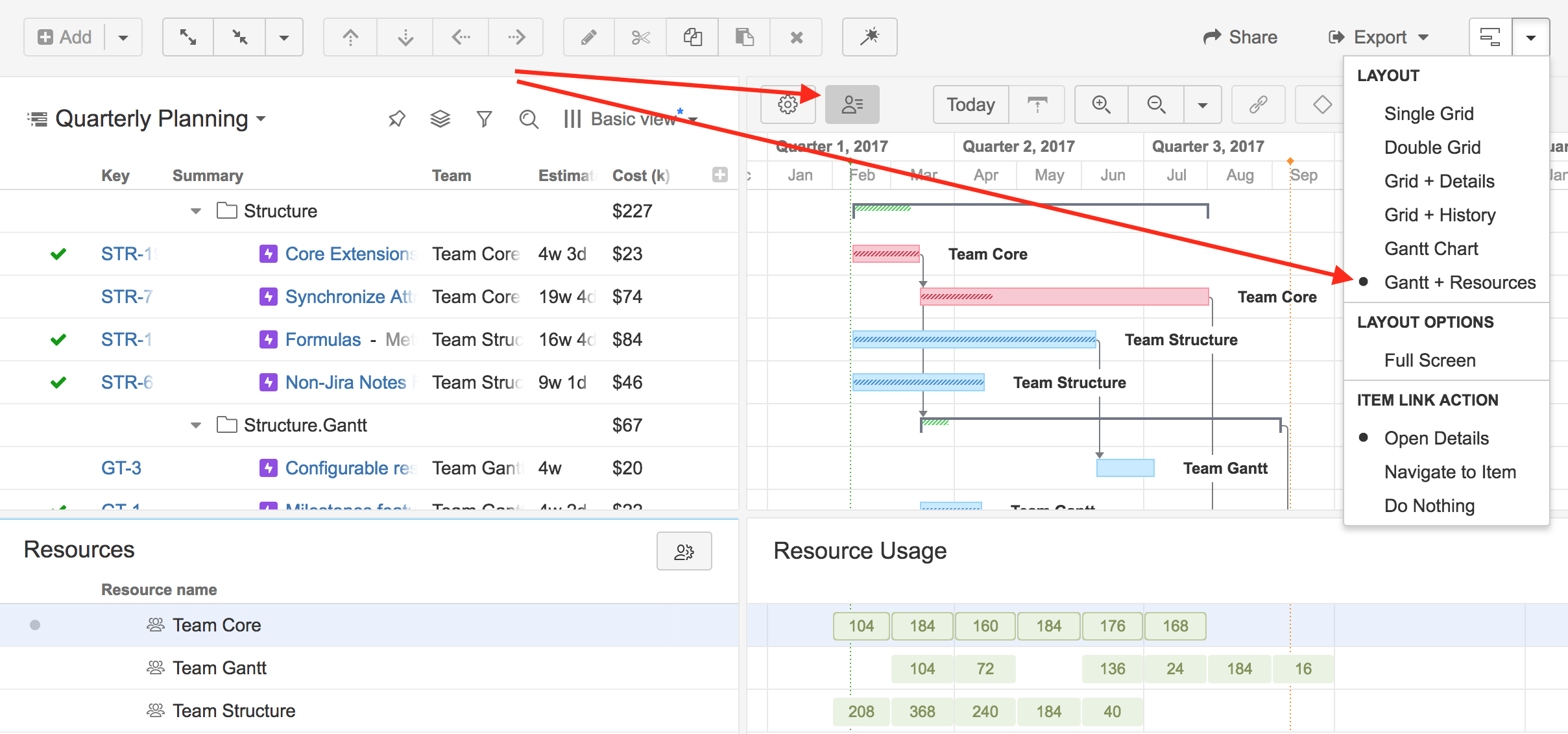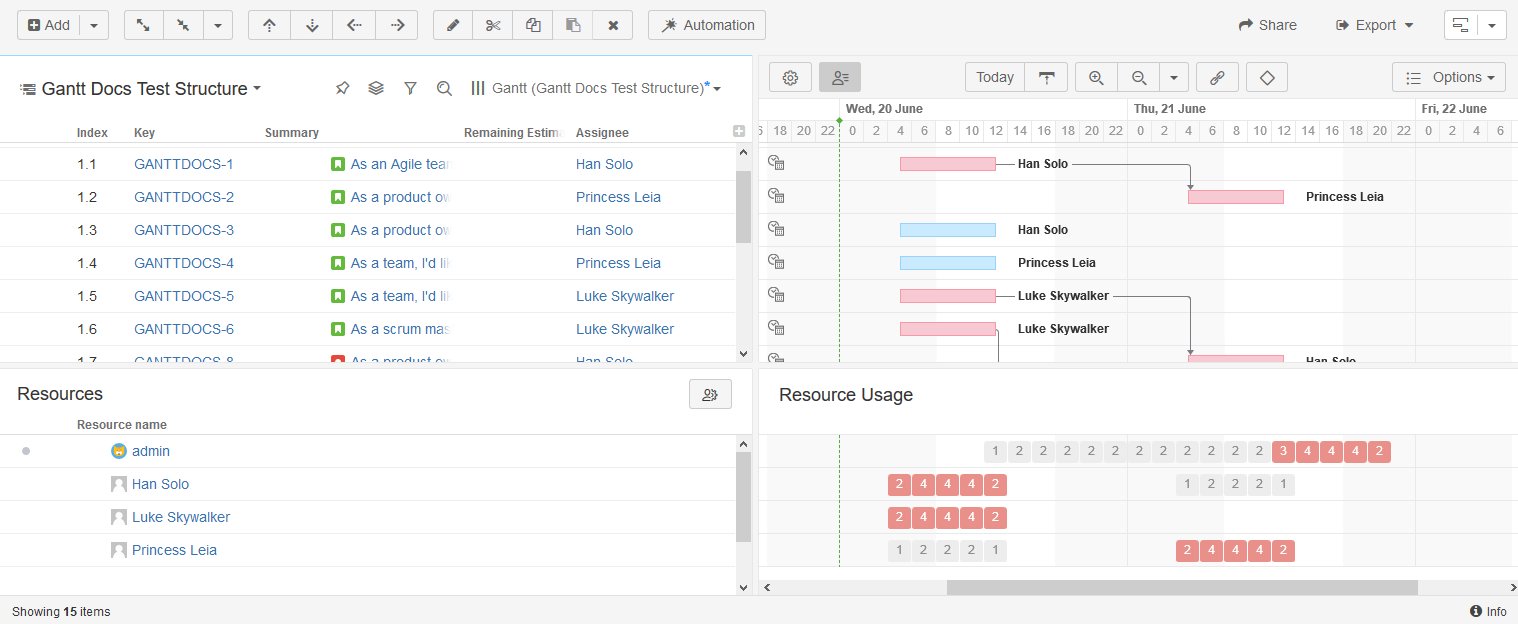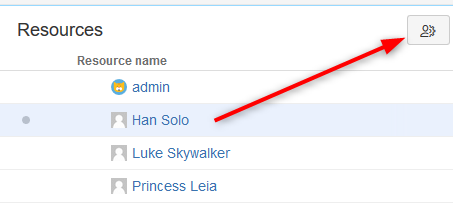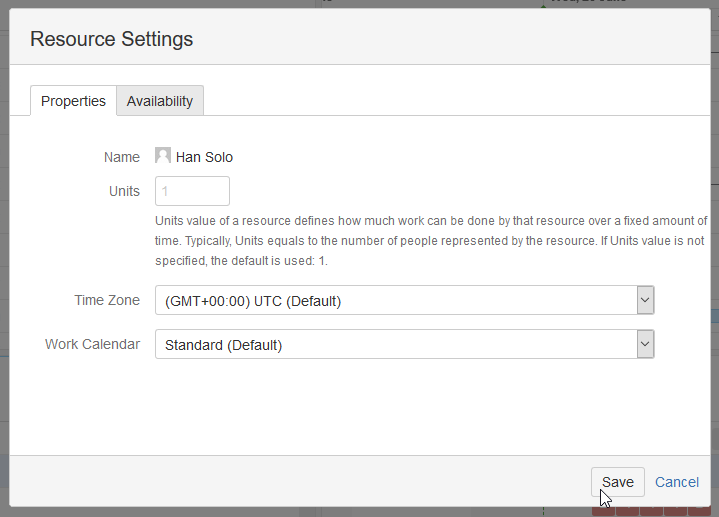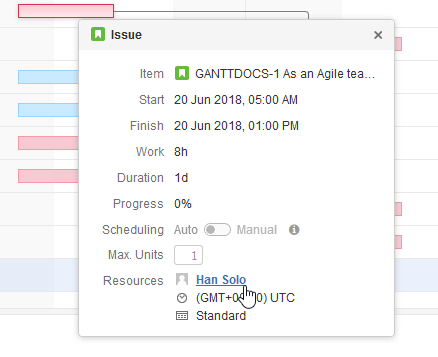Structure.Gantt allows you to track resource usage on a project (or multiple projects). If you used the Structure Wizard to create your Gantt chart, you may have already assigned resources for your chart. If not, or if you need to change your resource assignment, see Resource Assignment to assign resources to your tasks.
To view Resource information, click the Show Resources button or switch Layout to "Gantt + Resources."
Resources and Resource Usage
The Resources section of your chart is split into two panels:
- Resources - Displays a list of all resources based on the information entered into the field you assigned for resources.
- Resource Usage - Displays the number of hours assigned to each resource at a given time. If there is more work assigned to a resource than the resource can handle, the Usage square for that block of time will be highlighted, allowing you to quickly identify places where you may need to revisit your timeline or work distribution.
The Resource Usage timeline aligns with the Gantt chart timeline above and adapts to the zoom level selected in the Gantt toolbar. Zoom in or zoom out to see details of allocation within a specific period.
You can also display the allocation numbers in the Gantt chart itself. To do that, simply group your tasks by the attribute you used to define the resources. Note: You cannot group by Formula values.
Resource Capacity, Calendar, Availability and Time Zone
Each resource has a number of parameters that are taken into account when calculating task start and finish dates, duration and resource allocation. The default values for these parameters are set in Gantt configuration. You can override them for a specific resource by selecting the resource in the resource panel and clicking the Resource Settings button.
You can adjust the following settings:
Units - Determines how much work this resource can do in one hour. By default, it is set to 1, which corresponds to one person. If your resource is a team of 5, you should set this value to 5. A person who only works one day a week, using Standard work calendar, would have a value of 0.2.
- Time Zone - Defines the time zone of the resource.
- Calendar - Defines working and non-working times for the resource in the resource's time zone.
- Availability - Defines the percentage of the resource's capacity available during a specific period. This field allows you to factor in things such as vacation days or periods of part-time work.
All these parameters, as well as a task's Maximum Units, are taken into account when calculating the duration of a task. For example, a resource with 2 units will do the task twice as fast as the resource with 1 unit, as long as the task has Maximum Units set to 2 or higher.
Navigating to a Resource from the Gantt Chart
You can quickly navigate to a resource in the Resources panel (and open the Resources panel itself, if it's not yet open) by clicking on the resource name displayed in the Task Info Pop-up.
Filter by Resource
To view only issues assigned to a specific resource, highlight the resource's name in the Resources panel and click the Filter button.
When you filter by resource:
- Issues assigned to that resource will be visible in the WBS and Gantt chart
- Issues above those in the hierarchy will be visible but grayed out
- All other issues will be hidden
To learn more about assigning resources to tasks, see Resource Assignment.
